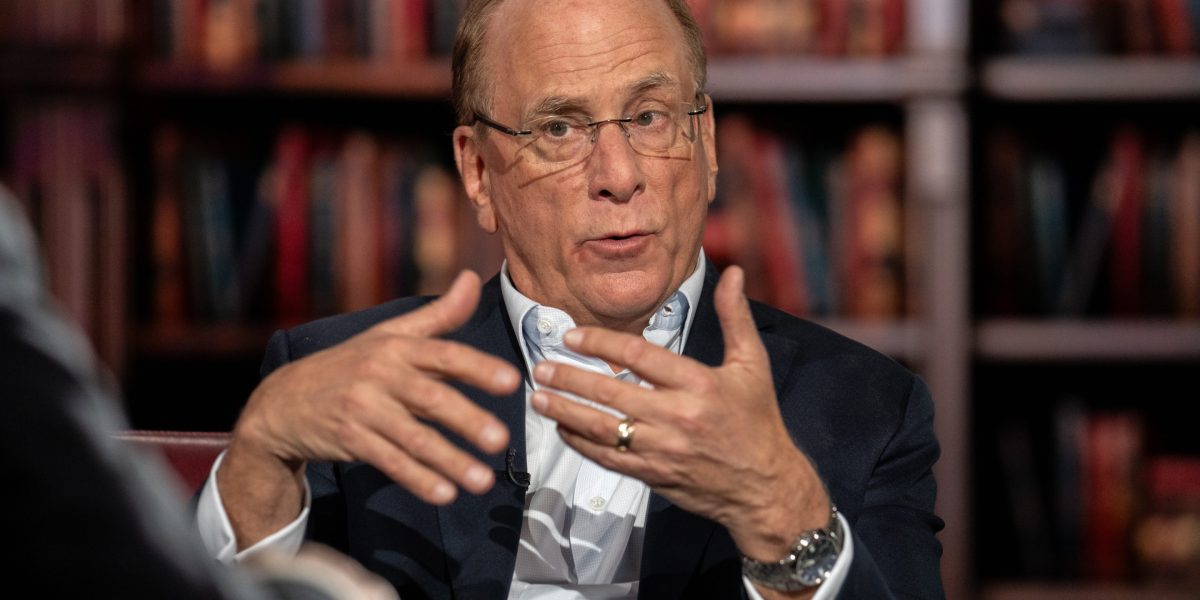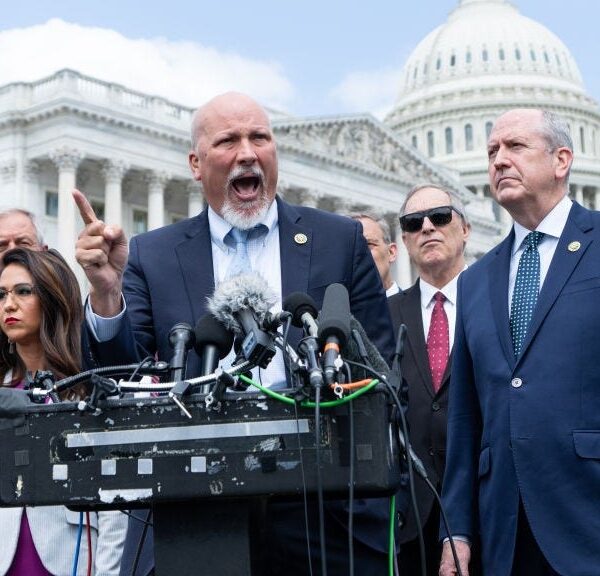

As America’s national debt nears the $35 trillion mark, BlackRock CEO Larry Fink has warned the country’s growth must keep up in order to pay its bills—or risk passing on a huge, unaffordable burden to coming generations.
The United States’s public debt is an issue that has been steadily climbing the national agenda: Jerome Powell believes it’s “past time” to have an adult conversation about the issue, while JPMorgan CEO Jamie Dimon believes debt is the “most predictable” crisis facing the American economy.
The likes of Bank of America CEO Brian Moynihan and Tesla CEO Elon Musk have also weighed in, voicing concerns about how much Uncle Sam is spending and how the nation will afford to service its debt.
Billionaire Fink has added his name to the growing chorus, telling Squawk on the Street this week: “This is my message not just to the U.S. but to every country right now: We have rising deficits, no one is spending enough time talking about deficits, the U.S. deficits are the largest in the world—growing at the fastest rate in the world—and we need to be finding ways to minimize the role of the deficit on the economy, on interest rates, on inflation.”
The main concern of experts isn’t simply the volume of debt—indeed, a certain level of debt is necessary and welcomed—but America’s debt-to-GDP ratio.
This factor indicates to potential lenders how much the country owes versus what it produces and thus, how able it is to pay it back. If the ratio tips too high analysts fear buyers of U.S. debt will turn their backs, leaving the nation cap in hand.
According to the Congressional Budget Office (CBO) there’s little good news on that front. In its latest update the CBO wrote: “In CBO’s current projections, the deficit for 2024 is $400 billion (or 27%) larger than it was in the agency’s February 2024 projections, and the cumulative deficit over the 2025–2034 period is larger by $2.1 trillion (10%).”
It reported debt held by the public will rise from 99% of GDP this year to 122% by 2034—surpassing its previous high of 106% in 1946, at the end of the Second World War.
Cuts vs growth
There are generally two schools of thought on how to bring this ratio back into line. Those on the bullish end are hopeful that an uptick in economic growth will offset the debt and interest payments in future.
On the more cautious side of the argument are those who, while conscious of the nature of spending in recent years, want to see administrations exercise more restraint—or at least set out a plan for how they will curb outlays in the future.
Billionaire Fink is firmly on the side of the former, pushing for growth as opposed to curbing spending.
He told CNBC: “We need to grow, and if we can’t grow out of it these deficits are going to become a big burden. We’re going to really be putting on the backs of our children and our grandchildren a real burden of these massive, massive spends that we can’t afford.”
“We need unfettered businesses right now,” he added. “We need growth. And we’re going to get growth from the private sector, we can’t rely on public deficits anymore—the public deficits are just growing too fast as a percentage of GDP.
“This is unheard of, it’s at an unsustainable level, yet we have the most dynamic, capitalistic system in the world. We have great companies, we have great ingenuity, great technology—let it unbound, let it go, create great jobs, create opportunity, and we’ll have a rising equity market that will really fuel this opportunity.”















